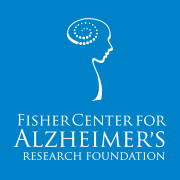
November 12, 2013
Beta-amyloid is a protein that causes Alzheimer’s disease when toxic forms of it accumulate in the brain. Two years ago Fisher Center scientists discovered that nerve cells are able to rid themselves of beta-amyloid through a process called autophagy, which provides cells with a means to destroy, or digest proteins that are no longer useful or that may become toxic. Autophagy works by bringing proteins to structures within the cell called lysosomes, which then digest the proteins. The scientists also showed that an experimental drug-like molecule called Smer28 helped the cells get rid of beta-amyloid by stimulating the process of autophagy. This groundbreaking research triggered a worldwide effort to find drugs that stimulate autophagy to treat Alzheimer’s.
Recently, the same team of Fisher scientists discovered a cellular pathway that ferries the proteins that form beta-amyloid to sites within the cell where autophagy works to digest the proteins. During this process, a protein called AP2 recognizes the beta-amyloid-forming protein and causes it to be wrapped up into a structure known as a cargo vesicle. The cargo vesicle is essentially a tiny molecular cage that carries the beta-amyloid-forming proteins into the autophagy system for digestion.
This truly groundbreaking work will provide scientists with new targets for drug development to treat Alzheimer’s. These drugs will reduce beta-amyloid levels in the brain by tweaking the system that regulates the cargo vesicles that carry beta-amyloid-forming proteins to the autophagy system and finally to the lysosomes for digestion.
Full Finding “Adaptor complex AP2/PICALM, through interaction with LC3, targets Alzheimer’s APP-CTF for terminal degradation via autophagy” PDF: Click Here











